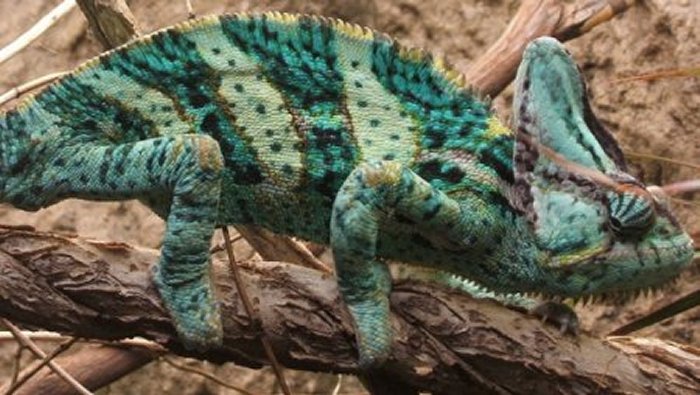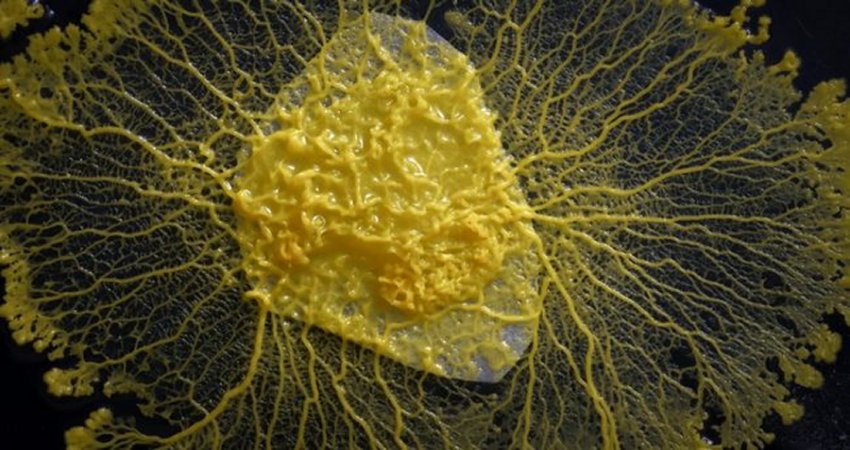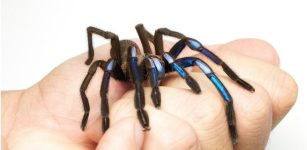Why Do Chameleons Change Colors In Unusual Ways?
MessageToEagle.com – Chameleons change colors in unusual ways when they interact with other chameleons and it doesn’t happen without a reason.
Native to Saudi Arabia and Yemen, veiled chameleons (Chameleon calyptratus) change colors when they convey different types of information during important social interactions.
When male chameleons challenge each other for territory or a female, their coloring becomes brighter and much more intense.
Males that display brighter stripes when they are aggressive are more likely to approach their opponent, and those that achieve brighter head colors are more likely to win fights.
Also, how quickly their heads change color is an important predictor of which chameleon will win a skirmish.
“We found that the stripes, which are most apparent when chameleons display their bodies laterally to their opponents, predict the likelihood that a chameleon will follow up with an actual approach,” said Russell Ligon, a doctoral candidate in ASU’s School of Life Sciences.

“In addition, head coloration — specifically brightness and speed of color change — predicted which was lizard was going to win.”
Researchers studied the distance, maximum brightness and speed of color change of 28 different patches across the chameleons’ bodies.
Chameleons typically have resting colors that range from brown to green, with hints of yellow, but each chameleon has unique markings.
See also:
Three-Eyed Tuatara Is The Closest Living Relative To The Dinosaurs
Ilha de Queimada Grande: The Snake Island Is World’s Deadliest Island
During a contest, the lizards show bright yellows, oranges, greens and turquoises. Interestingly, when the chameleons showed-off their stripes from a distance and followed that display with a “head-on” approach before combat, the important color signals on the striped parts of the body and head were accentuated.
“By using bright color signals and drastically changing their physical appearance, the chameleons’ bodies become almost like a billboard — the winner of a fight is often decided before they actually make physical contact,” Ligon said.
“The winner is the one that causes its opponent to retreat. While sometimes they do engage in physical combat, these contests are very short — five to 15 seconds. More often than not, their color displays end the contest before they even get started.”
MessageToEagle.com
Related Posts
-
 Warmer Ocean Will Hold Fewer Animals – New Study Shows
No Comments | Jun 14, 2019
Warmer Ocean Will Hold Fewer Animals – New Study Shows
No Comments | Jun 14, 2019 -
 The Kuiper Cliff Mystery – Why Does The Kuiper Belt Suddenly End?
No Comments | Jun 12, 2017
The Kuiper Cliff Mystery – Why Does The Kuiper Belt Suddenly End?
No Comments | Jun 12, 2017 -
 Erik The Red: Famous Viking Outlaw Who Colonized Greenland And Was Father Of Leif Erikson
No Comments | Jan 16, 2017
Erik The Red: Famous Viking Outlaw Who Colonized Greenland And Was Father Of Leif Erikson
No Comments | Jan 16, 2017 -
 Barbarians Were People Who Didn’t Speak Greek
No Comments | Jan 18, 2016
Barbarians Were People Who Didn’t Speak Greek
No Comments | Jan 18, 2016 -
 Alien-Like Brainless Organism Can Think And Make Decisions – Biological Mystery
No Comments | Aug 26, 2020
Alien-Like Brainless Organism Can Think And Make Decisions – Biological Mystery
No Comments | Aug 26, 2020 -
 Green Walls Deliver Cooling Effect Against Urban Heat And Help Biodiversity
No Comments | Feb 6, 2025
Green Walls Deliver Cooling Effect Against Urban Heat And Help Biodiversity
No Comments | Feb 6, 2025 -
 Jewel Of The Forest: New Electric Blue Tarantula Species Found In Thailand
No Comments | Sep 22, 2023
Jewel Of The Forest: New Electric Blue Tarantula Species Found In Thailand
No Comments | Sep 22, 2023 -
 Reptile Platypus Lived 250 Million Years Ago – New Fossil Discovered In China
No Comments | Feb 6, 2019
Reptile Platypus Lived 250 Million Years Ago – New Fossil Discovered In China
No Comments | Feb 6, 2019 -
 Strange New Species Of Duck-Billed Dinosaur From Big Bend National Park, Texas – Identified
No Comments | Jul 16, 2019
Strange New Species Of Duck-Billed Dinosaur From Big Bend National Park, Texas – Identified
No Comments | Jul 16, 2019 -
 ‘One Of The Botanical Wonders Of The World’: Giant Waterlily Grown At Kew Gardens Named New To Science
No Comments | Jul 5, 2022
‘One Of The Botanical Wonders Of The World’: Giant Waterlily Grown At Kew Gardens Named New To Science
No Comments | Jul 5, 2022
